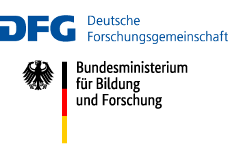Modelling the influence of bubble dynamics on motion, mass transfer and chemical reaction
Financing
Deutsche Forschungsgemeinschaft
Projecttitle
Modelling the influence of bubble dynamics on motion, mass transfer and chemical reaction
Projectleader
Prof. Dr.-Ing. habil. Martin Sommerfeld
Realized by
-
Keywords
Bubble flows, Euler/Lagrange calculations
Short description of the project
In the frame of the proposed project it is planned to account for the bubble dynamics (i.e. shape oscillations and tumbling motion) in the description of bubble motion, mass transfer and chemical reaction for numerical calculations of reacting bubbly flows by the Euler/Lagrange approach. As a result of bubble dynamics they will perform a tumbling motion and their interface as well as the flow in the vicinity of the bubbles will be continuously modified. This will also yield an increase in bubble residence time. As a consequence, mass transfer and reaction rates will be remarkably improved. So far the influence of bubble dynamics was not accounted for in the numerical calculation of bubbly flows by both the Euler/Euler- and Euler/Lagrange-approach. Hence, such models shall be developed in the proposed project, whereby the numerical calculation of reactive bubbly flows will be remarkably improved.
The numerical calculation of the fluid flow will be based on large eddy simulations (LES) using a dynamic sub-grid-scale (SGS) turbulence model. The influence of the bubbles on the fluid will be accounted for in the momentum equations and in SGS turbulence modelling (i.e. turbulence dissipation and bubble induced turbulence, BIT). The calculation of bubble motion will consider all relevant forces (i.e. base-line model of Liao et al. 2015) and bubble transport by SGS turbulence. In addition, the influence of the Basset force will be examined and a new bubble-wall interaction model will be developed. The bubble dynamics will be accounted for in all three levels of model development, bubble motion, mass transfer and chemical reaction. The dynamic bubble motion will be described through a stochastic variation of bubble eccentricity and orientation using a theoretically based bubble oscillation time scale. Regarding mass transfer and chemical reaction, bubble dynamics will be incorporated in the correlations of Sherwood number and enhancement factor. These correlations will be derived theoretically, supported by the direct numerical simulations of the working group Prof. Bothe (TU Darmstadt). In addition, the Lagrangian simulations will allow supporting the development of a bubble dynamics models in the frame of an Euler/Euler approach proposed by the group of Dr. Rzehak (HZD Rossendorf).
The models for bubble dynamics in bubble motion, mass transfer and chemical reactions (among others for the system Fe-NO) will be stepwise developed and implemented in OpenFOAM. In each working task a detailed validation will be performed based on the experimental studies conducted in various groups of the SPP 1740 (e.g. Prof. Schlüter, TU Hamburg-Harburg; Prof. Kraume TU Berlin; Prof. Hampel, TU Dresden).
